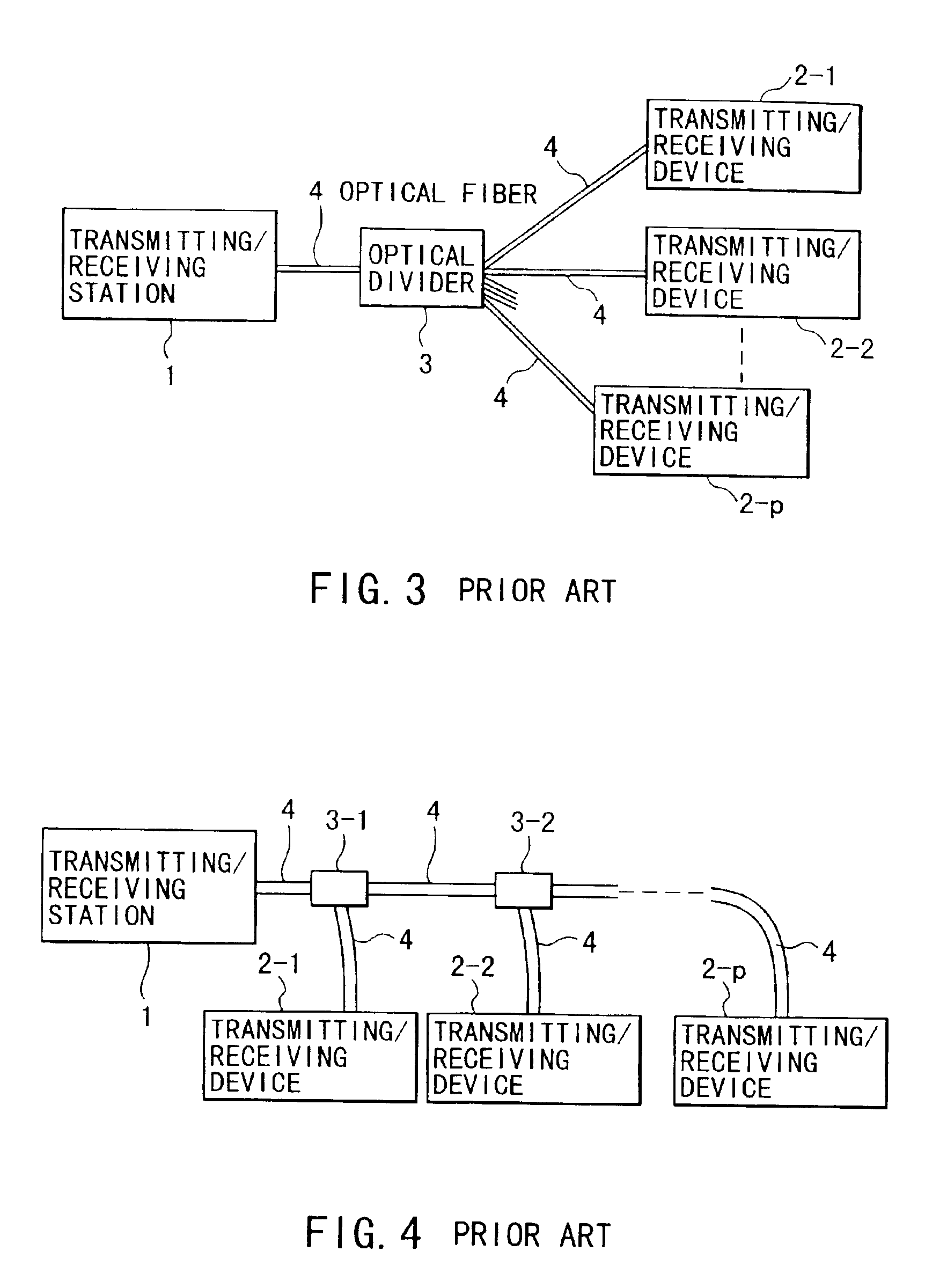Optical communication system
a communication system and optical technology, applied in the field of optical communication systems, can solve the problems of affecting the communication affecting the quality of radio frequency signals, and affecting the quality of radio frequency signals, and achieves excellent noise characteristics and large
- Summary
- Abstract
- Description
- Claims
- Application Information
AI Technical Summary
Benefits of technology
Problems solved by technology
Method used
Image
Examples
first embodiment
[0075]FIG. 6 shows the arrangement of a transmitting station as part of the first embodiment of the present invention. A transmitting station 10 comprises a modulator 12, an oscillator 14, an adder 16, and an electro-optical converter (E / O) converter 18.
[0076]The modulator 12 modulates an intermediate frequency signal, which is output from an oscillator (not shown), with a data signal to be transmitted and supplies an intermediate frequency subcarrier signal fIF as the modulation result to the first input terminal of the adder 16. The adder 16 adds the intermediate frequency subcarrier signal fIF to a pilot carrier signal fLO output from the oscillator 14.
[0077]The E / O converter 18 converts the sum signal of the intermediate frequency subcarrier signal fIF and pilot carrier signal fLO into an optical signal. The E / O converter 18 comprises a driver amplifier 20, a current source 22, a semiconductor laser element 24, an inductor 26, and a resistor 28. The inductor 26 applies a bias co...
second embodiment
[0108]FIG. 10 shows an optical communication system according to the second embodiment of the present invention. The second embodiment is associated with an entire optical communication system including the transmitting station of the first embodiment of the present invention, and a radio communication base station device including a transmitting device.
[0109]As shown in FIG. 10, a transmitting station 10 is connected to transmitting devices 32-1, 32-2, . . . through an optical fiber 30.
[0110]Each transmitting device 32 is connected to the optical fiber 30 through an optical divider 34. The transmitting devices 32 are set at separate locations. A range where radio waves reach is a radio zone (cell or service area), and each transmitting device 32 can transmit / receive radio waves to / from communication terminals in the cell.
[0111]The transmitting station 10 is the same as in the first embodiment shown in FIG. 6.
[0112]The optical fiber 30 is an optical transmission line connecting an E...
third embodiment
[0125]FIG. 11 shows the third embodiment of the present invention. The transmitting station 10 has the same arrangement as in the first and second embodiments. In the transmitting device 32 as well, the same reference numerals as in the transmitting device 32 of the second embodiment denote the same parts in the third embodiment.
[0126]The transmitting device 32 of the third embodiment comprises the O / E converter 34, the divider 36, the multiplier 42, the bandpass filter 44, the power amplifier 46, the antenna 48, a low-pass filter 52, and a high-pass filter 54.
[0127]In this system as well, in the transmitting station 10, a radio data signal obtained by adding the pilot carrier signal fLO from the local oscillator 14 to the intermediate frequency subcarrier signal fIF from the radio signal modulator 12 by the adder 16 is input to the E / O converter 18, a semiconductor laser element in the E / O converter 18 is directly modulated by the radio data signal to obtain an optical signal, and ...
PUM
 Login to View More
Login to View More Abstract
Description
Claims
Application Information
 Login to View More
Login to View More - R&D
- Intellectual Property
- Life Sciences
- Materials
- Tech Scout
- Unparalleled Data Quality
- Higher Quality Content
- 60% Fewer Hallucinations
Browse by: Latest US Patents, China's latest patents, Technical Efficacy Thesaurus, Application Domain, Technology Topic, Popular Technical Reports.
© 2025 PatSnap. All rights reserved.Legal|Privacy policy|Modern Slavery Act Transparency Statement|Sitemap|About US| Contact US: help@patsnap.com



